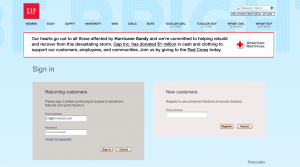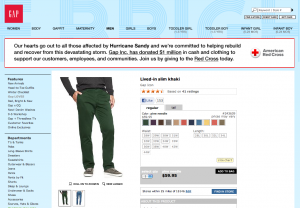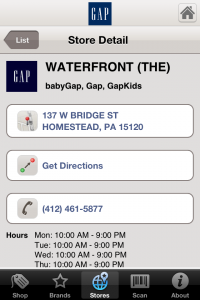What Is Universal Analytics And How Does It Affect My Website?

What does this sweater have to do with universal analytics? Read on…
Last week I had the pleasure of attending the Google Analytics Summit for 2012 in Mountain View, California. It really was a great two days, and the Google Analytics folks did a superb job of hosting a bunch of nerds interested in their product. There were tons of announcements, particularly on the first day, and the main one involved the biggest change to Google Analytics since it transitioned from the old Urchin.
Universal Analytics
You can read all about it on various blogs covering the event, particularly Google Analytics’ own blog. So what are the key points?
Easy and Fast Measurement
Google Analytics had up to this point stored a whole bunch of it’s information within the user cookies, which constantly would get passed to GA on every pageview. Use premium with 10-20 custom variables on a visitor? That was getting passed with every page hit.
One of the biggest innovations with the new setup, is that there will be only 1 simple cookie with very basic information in it. This will speed up page times of the entire internet with the sheer drop in how much data gets passed on every page hit. All the data now kept in cookies will now reside on the Google Analytics servers, allowing a whole bunch of other things that we couldn’t do before, including customizing our sessions server side. Right now sessions are 30 minutes long and are in cookies. Get up and go chat with someone at the water cooler for 30 minutes and come back to your computer? New session. Now you can set your own session lengths and define them yourself up to 4 hours long. You can also put time limits on your campaigns of up to 2 years. In addition they’ll be opening up more code libraries and tracking api’s for better interactions.
User ID Control
The whole new Universal Analytics is based on users, not visits. It’s a key distinction. We’re interested in user behavior overall, not behavior of disconnected visits or sessions. We do this by having an override ID on every device interacting with GA. Sure there are issues like we still need to identify people via a login or some other means, but once we can do so, we can now see specific users across devices very easily.
Offline Conversions
What fun would it be if we only could track from a website? Now with the new API you’ll be able to send a hit from anywhere and interact with Google Analytics from a CRM, or a Call Center, or even a POS. This will let us record more different real world interactions for a specific user along side their internet activity.
Custom Dimensions
Custom Variables had a lot of power, but were limited in so many ways. Not filterable. Bog down sites with more than a few of them. But now that we’re setting them and storing them server side, we’re looking at essentially version 2 of the Custom Variables. Regular Joes will get 20 of them, Premium users 200. How could you possibly need 200 custom dimensions? Well now with the ability to upload your dimension data from the api or a csv suddenly you can bring a whole bunch of information into Google Analytics about your users, tied to their user id.
Omni-Channel Attribution
Attribution modeling is going from being Premium only, to available for all, along with the custom model builder. In addition you’ll have a 90 day configurable look back window, and the ability to choose which conversions/transactions you want to include in the 1 MILLION conversion sample.
Cost Data Import
Not enough? Well now you can import cost data for anything (Facebook, Bing, SEO, etc.) and see the results of your hard spent money. On top of that ROI data will soon be available in the traffic sources, which is being renamed Aquisitions, so you’ll be able to see where users are coming from, what they’re doing on the site, and how well they’re converting.
Integrated Campaign Manager
And if you haven’t heard, now all your campaign tags will be integrated directly within Google Analytics with an easy tag manager to help you create your campaigns and tag your links rather than having to do it manually, or using the clumsy URL builder tool currently outside of GA.
And jeez even more….
Data driven attribution models, modeling conversion probabilties, Customer Lifetime Value (CLV), Recency and Fequency, and more. So many changes centered around this conceptual shift from disparate visits to specific users.
BUT WHAT DOES THIS MEAN FOR ME???
Great Question. It’s so great that Justin Cutroni wrote a blog so similar to what I have below yesterday. I mean it’s pretty much exactly what I had prepared, so I feel compelled to give him a shout out. I totally wasn’t copying you Justin, I swear.
The best way to understand how this is going to affect your website, is to take a generic example of some online and offline interactions across multiple devices, doing something people can understand. So let’s pretend that we’re talking about the clothing retailer The Gap, and how a single user (we’ll call him Jim) interacts with the company.
Jim goes into The Gap in the mall one day. He signs up for a Gap card, and purchases a new shirt.

A few weeks later, Jim logs onto the Gap website at work, on his work laptop, and pays his balance on the Gap card.
After signing up for the card, Jim was added to their physical mailing list, and a few weeks later he’s mailed a paper mailer with seasonal specials on it. It gets buried in a pile of junk mail, and a couple weeks later on his way out the door he sees it and is intrigued.

He pulls out his mobile phone while on the bus riding to work, and loads up the Gap mobile app, and looks for the sweater. On the app he logs in with his account when prompted and finds the sweater, but gets to work before pulling the trigger.

Later that night back at home, he goes on the website on his personal computer to find the sweater again, but he can’t find the right combination of color and style that he likes. He does however find a pair of pants he likes, and logs in to add them to his shopping cart, however he’s unsure of making the purchase, and looks for store availability. He wants to try them on. It shows limited availability, so he closes his web browser, picks up his phone, opens the mobile app, finds the store, and presses the button to call it.

They have the pants in stock, so the following day he goes to the store, tries on the pants, and purchases them with his Gap card.
Aaaaaaaanannnndd Scene
So what can we tell about that sequence of events currently in Google Analytics?
We see one New Direct visitor on a laptop, logging in (maybe tagging them as a member in a custom variable), and paying a bill.
We see a second New visitor on a mobile phone, surf for a sweater we know was in a recent mailer a few weeks previous. We see he’s a member. We see that visitor return later in the day to call a physical store location.
We see a third New Direct visitor on a laptop surfing the site, looking at pants, looking at the store availability section, we see he’s a member, but it’s disconnected still.
What we don’t see are any of those actions tied together. We don’t see his overall customer value. We don’t see his eventual purchase. It’s all disconnected, and difficult to put any value on. In the store or the Gap CRM maybe they see that Jim bought a shirt, got a mailer, and a couple weeks later came in and bought pants. The paper mailer can be given some value to that store visit because of maybe brand lift, but for all we know Jim didn’t do ANYTHING online.
What about in the new Universal Analytics?
When Jim logs onto his work laptop, we know it’s him, and we use a User ID override to identify it as Jim.
website login to pay a bill
Later when we mail the mailer to everyone, we send hits to Google Analytics from a system indicating the mailer was mailed. Now we have 1 user with two interactions.
website login to pay a bill -> offline mailer
We then see Jim on his mobile phone he downloaded and put his login into.
website login to pay a bill -> offline mailer -> mobile session looking at sweater from mailer
After he goes home onto his personal laptop and logs in and puts the pants in his cart we know it’s him… as we do on the mobile app as we already identify him on there…
website login to pay a bill -> offline mailer -> mobile session looking at sweater from mailer -> website session looking at pants and the store locator -> mobile session looking at store locations and calling a specific store
Lastly we identify him at the store when he goes in and uses his card, and we upload the offline conversion to GA.
website login to pay a bill -> offline mailer -> mobile session looking at sweater from mailer -> website session looking at pants and the store locator -> mobile session looking at store locations and calling a specific store -> offline conversion at store
So now rather than a whole set of disparate users, with no real known connection, and no conversion tracked, we can see a whole chain of acquisition and attribution. We see the offline interactions. We know he got the mailer and looked at the sweater, but we know he also looked at the jeans and then went into the store. We can see that the mobile app as well as the website paid a pretty strong part in that conversion process, which before we had no real idea about whether the user converted or not.
That’s the power of Universal Analytics
It’s about focusing on the user, rather than the visit, and then leveraging that focus to gain better insights into users, and how they convert. Is there work to make this happen? Yeah. You need to have some way of capturing the User, his or her ID, their interactions. Getting people to log in, to identify themselves. But if you do that think of the power.
You can upload custom dimensions about Jim. You know he’s a male, that he buys size 36 pants. that he looked at the fall mailer. you can capture this in GA. You can segment the dimension and look just at users you think got or reacted to the mailer. You can attribute value for offline purchases. Maybe you got his age too, and suddenly you can look at conversions for users in certain age ranges, and see how they use your website, mobile app, or stores in conjunction.
So much power to get so many better insights out of the data.
I just wish we had all this now. But it’s coming soon. So get ready.


